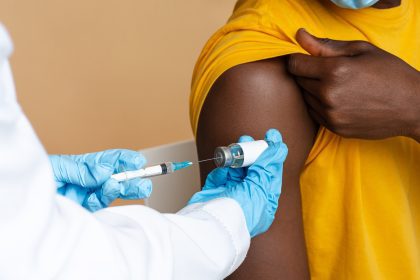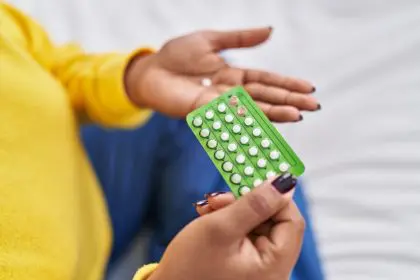A groundbreaking study published in Environment International has sparked new concerns about the safety of tampons, revealing the presence of toxic metals in these widely used menstrual products. The research, which examined 14 different brands across 18 product lines, detected traces of potentially harmful substances including lead and arsenic, raising questions about the regulation and safety standards in the menstrual product industry.
The implications of these findings are far-reaching, affecting millions of users worldwide who rely on tampons during their menstrual cycles. The research team’s thorough examination provides unprecedented insight into the potential risks associated with these essential products.
Breaking down the research
The comprehensive analysis identified 16 different metals across the tested products, with particularly concerning findings regarding lead and arsenic levels. These metals are well-documented for their potential health risks, making their presence in intimate care products especially troubling. The study’s scope and methodology provide crucial insights into the current state of tampon manufacturing and safety standards.
Researchers employed sophisticated testing methods to detect even trace amounts of metals, ensuring accurate and reliable results. This meticulous approach has provided the most detailed picture yet of metal contamination in menstrual products, setting new standards for future research in this field.
Organic vs. conventional: A surprising twist
One of the study’s most surprising revelations concerns the differences between organic and non-organic tampons. Contrary to what many might expect, organic tampons showed higher concentrations of arsenic, while their non-organic counterparts contained elevated levels of lead. This finding complicates the often-held belief that organic products are inherently safer.
The research suggests that the source of these metals might be related to various factors, including the growing conditions of the cotton used in production, manufacturing processes, and environmental contamination during production or transport. This complexity highlights the need for comprehensive testing across all product types, regardless of their organic status.
The regulatory gap
The discovery of toxic metals in tampons highlights a significant gap in current regulatory frameworks. Unlike many other personal care products, menstrual products face relatively limited oversight regarding testing requirements for harmful substances. This regulatory vacuum has allowed potentially concerning ingredients to go undetected and unregulated.
Current regulations primarily focus on bacterial contamination and basic safety standards but lack comprehensive requirements for testing metal content or other potential chemical hazards. This oversight gap raises important questions about the adequacy of existing safety measures and the need for more stringent regulations to protect consumer health.
Understanding the health implications
While the presence of toxic metals in tampons is concerning, experts emphasize the importance of understanding these findings in context. The health impact of these metals, particularly at the levels detected in the study, requires further research to fully understand the potential risks to users. Several factors influence the potential health implications, including the frequency and duration of tampon use, individual sensitivity to various substances, cumulative exposure over time, and the body’s ability to absorb these metals through vaginal tissue.
Medical professionals stress the importance of considering these findings within the broader context of overall health risks. While any exposure to toxic metals is concerning, the relative risk must be evaluated alongside other factors affecting women’s health. This balanced approach helps inform decisions about menstrual product choices while avoiding unnecessary panic.
Safe alternatives and solutions
For those concerned about these findings, several alternative menstrual products are available. Menstrual cups offer a reusable option that eliminates exposure to potentially contaminated materials. These silicon-based products have gained popularity for their eco-friendly nature and long-term cost-effectiveness.
Reusable cloth pads provide another sustainable alternative that allows users to control the materials coming into contact with their bodies. These products can be washed and reused, reducing both environmental impact and exposure to unknown substances. Period underwear has emerged as a modern solution combining comfort with protection, offering varying levels of absorbency while eliminating the need for disposable products.
The growing availability of alternative products provides options for those looking to minimize their exposure to potentially harmful substances while maintaining effective menstrual care. Each alternative comes with its own set of considerations regarding comfort, convenience, and environmental impact.
Looking ahead
The scientific community emphasizes the need for additional studies to determine the long-term health effects of exposure to these metals, investigate potential sources of contamination, develop safer manufacturing processes, and establish appropriate safety thresholds for various substances. This ongoing research will be crucial in understanding the full scope of the issue and developing effective solutions.
Industry response to these findings will be critical in shaping the future of menstrual product safety. Manufacturers face increasing pressure to improve testing protocols, enhance transparency about their manufacturing processes, and invest in developing safer alternatives. Some companies have already begun implementing more rigorous testing procedures and exploring new materials and production methods.
Consumer awareness and advocacy will play vital roles in driving change within the industry. As more people become informed about these issues, demand for safer products and better regulation is likely to increase. This consumer pressure, combined with ongoing research and advocacy efforts, could help catalyze meaningful improvements in product safety standards.
The presence of toxic metals in tampons serves as a crucial reminder of the importance of product safety and regulatory oversight. As research continues and awareness grows, the hope is that this will lead to improved safety standards across the industry, better testing and monitoring protocols, more transparent manufacturing processes, and greater consumer protection. The journey toward safer menstrual products requires ongoing collaboration between researchers, manufacturers, regulators, and consumers.













